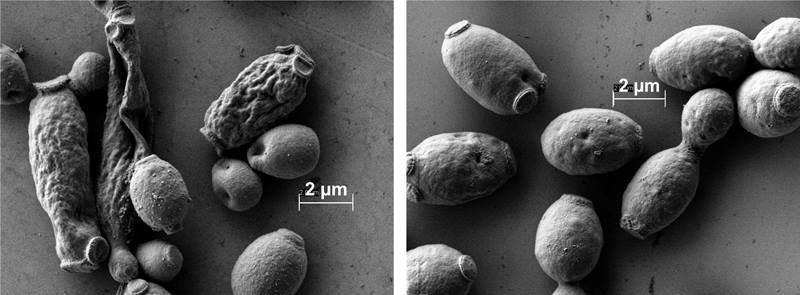The Science
The Impact
This study produced the most IL-tolerant microorganism reported to date. It also revealed fundamental mechanisms of IL toxicity and resistance. These insights will be critical to developing robust microbes that can directly convert plant biomass treated with ILs into biofuels and biochemicals.
Summary
Environmentally friendly organic solvents such as ILs have versatile uses in producing biofuels and bioproducts. These ILs break down plant material and help microbes convert the plant material into useful products. However, ILs can inhibit these microbes. This is true even at extremely low concentrations of ILs (concentrations of 0.5−1.0 percent). The oleaginous yeast, Yarrowia lipolytica, can naturally grow in 10% concentrations of one type of IL, 1-ethyl-3-methylimidazolium acetate. This ability makes this yeast more tolerant than any laboratory-engineered microorganisms or specific varieties of naturally occurring microorganisms. However, scientists do not fully understand the underlying mechanism for how Y. lipolytica tolerates ILs. Through adaptive laboratory evolution, scientists isolated a strain of Y. lipolytica that tolerates several different types of ILs at concentrations as high as 18 percent. The researchers discovered that the underlying mechanism for robust IL tolerance is in how Y. lipolytica restructures and strengthens its cell membranes by incorporating sterols, a type of natural steroids. While ILs do inhibit the production of sterols in wild (or naturally occurring) Y. lipolytica, scientists may be able to increase how the yeast expresses specific relevant genes. This would cause the naturally occurring Y. lipolytica to tolerate the same high levels of IL as the laboratory strain in this study.
Funding
The sequencing project was supported by The BioEnergy Science Center (BESC) and The Center for Bioenergy Innovation (CBI), DOE Bioenergy Research Centers led by Oak Ridge National Laboratory and funded by the Office of Biological and Environmental Research in the DOE Office of Science. The RNAseq work conducted by the DOE Joint Genome Institute, a DOE Office of Science user facility. The authors would like to acknowledge financial support from the National Science Foundation and the DOE BER Genomic Science Program.
Original post https://alertarticles.info




